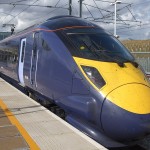Train travel in the UK can be confusing at best, so I’ve put together a brief guide to getting around mainland England, and in particular the best ways to use public transport in London.
Around the UK
National rail operates the trains within England, with different routes being covered by different train companies. You can check the timetable here, and buy tickets at a number of ticket providers online (e.g. National Rail, TheTrainLine), direct from the train company’s website (e.g. EastCoast, First Great Western, Southern Trains, Virgin Trains) or call center, or at ticket offices or from automated machines in stations. You can buy tickets in advance of the date you want to travel, and some companies allow you to reserve seats if you book online or over the phone.
Transport in London
London transport can be a little bit daunting to those who aren’t used to it, with a myriad of terminologies and different companies. Basically, within the London area transport breaks down into the following:
The Underground
(also known as ‘the tube’)
Operated by TFL.
Ticket / Oyster Card
London’s most famous form of transport, the London Underground is our subway system, and it connects central London comprehensively, although it is a little patchy south of the Thames. Day travelcards (or longer, e.g. weekly / monthly) can be purchased at underground stations from the ticket office or automatic machine, and are charged according to ‘zones’ (concentric rings moving outwards from central London). For most tourists, a zone 1 – 3 pass will cover all major attractions, and costs around £7 – £10 a day.
The Oyster card system is by far the best way to pay for your underground travel if you intend to use this or other ‘TFL’ services regularly. Journeys cost around £2.50 on oyster card, maxing out at a £7 daily maximum.
The Overground
Operated by TFL.
Ticket / Oyster Card
The overground network is a newer extension of the underground, although (rather unsurprisingly) the trains run above ground. The overground is part of the same ticketing system as the underground, so you can use the day (or longer) travelcards you’ve purchased on these trains as well, and your oyster card is also welcome here. For oyster card users, the overground is a little cheaper than the underground, at around £1.50 per journey.
The DLR
Operated by TFL.
Ticket / Oyster Card
The Docklands Light Railway (DLR) is another extension of the underground network covering parts of southeast London; it is also part of the same ticketing system so you can use your travelcard or oystercard here too.
National Rail
Some train services in central London run on the same network that covers national trails. These services cover a lot of areas south of the Thames where tunneling is not possible to extend the underground network. Tickets for these services can be purchased at ticket offices or online in the same way as other national rail tickets (see above), or you can continue to use your oyster card or travelcard, provided that your destination lies within one of the 8 London zones.
Buses
Often a more intimidating option, buses in London are actually a great way to get around. Modern buses have an electronic display as well as a verbal announcement of each stop, so you should be able to tell when you’ve reached your destination. You can flag down a bus from one of thousands of bus stops all over the city, and bus stops will generally also include a map of the local area and other nearby stops and bus routes. They’re also often cheaper than other options as you pay a single flat fare for all journeys, and during quieter times of day they can be quicker than the underground.
You can pay for your bus journey in a number of different ways – oyster card (simply swipe your card when boarding the bus) or contactless payment from a credit or debit card. Note that as of July 2014 you can no longer pay in cash.

